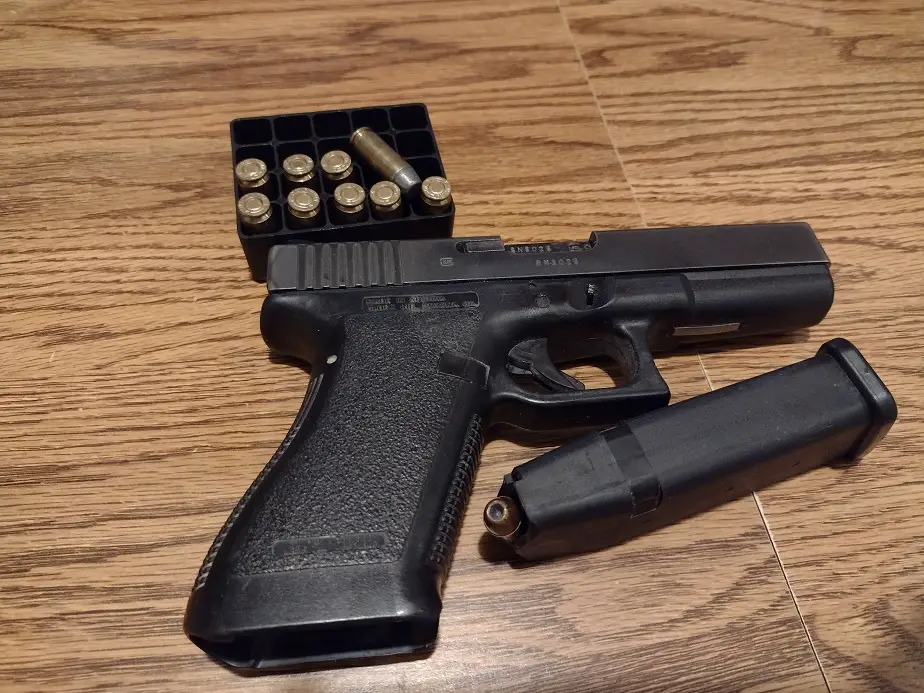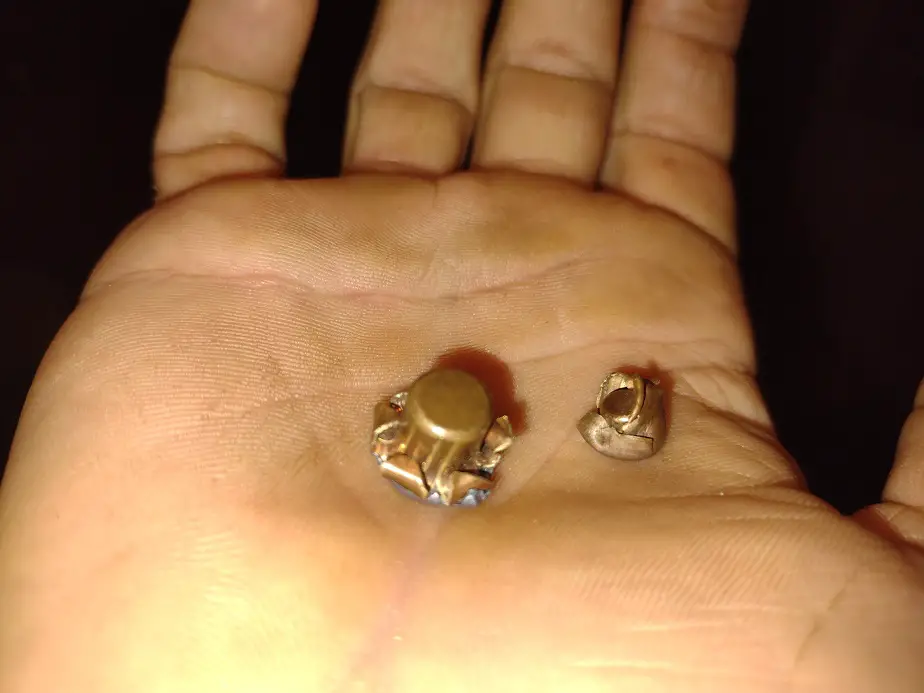Hollow-point bullets have been one of the greatest innovations in firearm technology. They’re really quite amazing when you look at how they are designed and how they work.
Traditional hollow point bullets have a hollow nose that is forcibly split or peeled open when moving through a target, allowing it to expand up to twice its original size. This expansion greatly limits the penetration potential of the bullet and creates a wider wound channel in the target.
Let’s work out the different types of hollow points, what they are used for, and why they are so great.

There are 2 Different Types of Hollow Point Bullets
The traditional hollow point, usually abbreviated as HP, has a large hollow cup at the nose to initiate quick expansion. This type are used for hunting and self-defense, although there are big differences between bullets designed for each.
The traditional hollow point, or HP, bullets are designed to expand so the wound channel is wider, creating more wound shock and blood loss. In hunting, this helps to ethically take game animals. In self-defense, it keeps you alive by ending a threat as quickly as possible.
There’s another type of hollow point, abbreviated HPBTM, or Hollow-Point Boat-Tail Match. These bullets have a smaller hollow point and a much smaller opening at the nose. They are not designed to expand at all. These are high-end competition bullets designed to maintain a top-degree of accuracy in flight.
Sometimes they are called BTHPM, which just switches the words around a bit. Basically, by having a void at the front of the bullet, it’s more rear heavy which makes it better to stabilize itself n flight and have a little less drag.
Boat Tail means the rear end, heel, of the bullet tapers back a bit which reduces overall drag on a bullet, helping it to keep up velocity and have less effect from wind and gravity.
Being really technical, the open end adds about 2 percent to the drag factor, but the change in balance reduces the drag factor by around 5 percent, so it’s a net gain in drag, which increases bullet balance and accuracy.

Defensive HP are Different From Hunting HP bullets
Hunting hollow points are generally heavier, expand slower, and are available in more powerful calibers than defensive ammo. Many of them use more tough metals like copper and less lead, which increases their ability to penetrate deeply after expanding.
Defensive-use hollow points are generally designed to penetrate to around 12-15-inches. That’s based on the FBI standards that a defensive bullet should penetrate a minimum of 12-inches and a max of 18-inches.
That range of penetration ensures that it will penetrate enough to prove effective in any condition, and will not penetrate so deep as to create an undue risk to the public.
The vast majority of expanding hollow points are intended for defensive use. Most hunting bullets are solid expanding bullets that penetrate deeper.
So, Defensive hollow points expand quickly and penetrate moderately at best. Hunting bullets penetrate deeper and generally are much more powerful than defensive bullets since over-penetration is not a concern.
Some Bullets Expand More Rapidly than Hollow Points.
There are specific types of bullets that are designed to expand ridiculously fast. they are like a hollow point, but the hollow cup is capped with a hard polymer material. When the bullet hits a firm target, the polymer cap is pushed into the hollow nose which forces it open almost immediately.
The speed at which it expands greatly reduces penetration, and this design doesn’t work well outside of hunting rifles. At handgun speeds, it just tends not to penetrate at all. My favorite hunting ammo, Winchester Deer Season XP, is like this.
Then we have varmint bullets. This class of bullet generally penetrates a maximum of 6-inches, not meeting the defensive ammo standards. They are designed for hunting very small animals up to 30 pounds. These bullets are often described as “violently expanding” “blows up” and “explosive”.
This is where some people get confused about expanding bullets. Nothing actually explodes. they are designed with a very thin copper jacket around soft lead. As the bullet expands, the jacket tears apart and the soft lead just crumbles into pieces. Those small pieces lack kinetic energy to penetrate deeply.
The result is a bullet going over 3,000 fps (2,045 mph) that transfers all its kinetic energy into the target within 2-4 inches. The target can’t handle that energy so it creates a shallow but very destructive wound, destroying all the tissue in the small area.
Varmint bullets are not recommended for defensive use because the bullet can go into disintegration mode basically immediately, and may not penetrate more than a single inch, which is not incapacitating to a threat.

Are Hollow Points Illegal Anywhere?
Hollow point bullets are not illegal in the US but are heavily restricted in New Jersey where you can only possess them in public if going hunting or to a registered shooting range. Hollow point bullets are not actually outlawed in war, but that argument has been made by countries that don’t have them.
People have always been trying to say that certain deadly weapons are too deadly for anyone but me and my friends. Shucks, in WWI, Germany accused the US of breaking war treaties (wounding soldiers greater than minimal lethality) by using shotguns.
The reason lawmakers try to demonize hollow point bullets is that those particular lawmakers don’t actually want any bullets. If they can convince enough people that a certain bullet is bad and are able to outlaw it, that makes it easier to outlaw the next one.
Hollow point bullets, and other expanding bullet types, are considered safer because they work better, and they expend their energy faster when going through an object. A solid bullet can enter and exit a target, and still have 70 percent of its bullet energy which is still more than enough to kill a person.
Hollow point bullets reduce that threat of over-penetration as much as possible. They are the safest ammo choice, and they are significantly better at stopping a lethal threat than solid bullets. That’s why every firearm expert recommends quality hollow points for defensive use.
Hollow point bullets do not explode, they expand in the front. There is an actual exploding bullet used by the military. It’s called the Raufoss Mk 211. It’s a .50 BMG round with a small bit of C-4 type explosive inside the front of the nose and a tungsten carbide core in the rear of the bullet.
Its purpose is to penetrate armored vehicles like heavy tanks. The explosive charge at the front weakens the wall of a tank or other things, and the hardened core travels through it easier. Then, since there is a hole, explosive force goes inside with a bit of shrapnel making it uncomfortable to be on the other side.
The bullet has about the explosive force of a grenade and will detonate at velocities as low as (around) 800 fps, which is something like 3,100 yards or so. It’s supposed to be only used against vehicles in special situations due to their cost and the possibility of collateral damadge.

